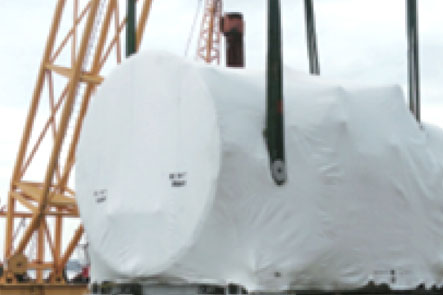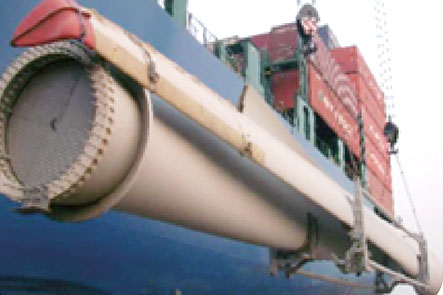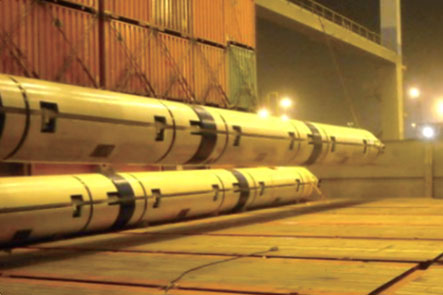
following the situations down below, as the cargo cannot be shipped on a single flat rack:
1. If the cargo placing on a single FR has blocked the lifting points;
2. The cargo height combined with box thickness has exceeded terminal lifting limit/land transportation limit;
3. The cargo has weighed the maximum load of a single flat rack.
Vastly exceeded the size and/or weight of a standard container, therefore, the shipment is handled as non-unitised cargo and normally placed on a bed of flat racks with a large number of lashing points. BB Container is multiple Flat Racks combined into a large " Tray ".
For BB Container, the carrier will provide one to several flat racks according to the size, shape and lashing requirements of the cargo. Once flat racks are required, athwartships stowage will be carried on. Under the guidance of the notary appointed by the carrier, the cargo will be lashed and secured after hoisting on board.
Before receiving BB Container, the terminal requires the application in written form provided by the carrier and cargo relevant information (Flat Rack quantity used, stowage plan, cargo packing, gravity and lifting point, lashing material provider, horizontal mode of transport, notary public on site, etc.). The BB container can finally be received after the terminal and carrier confirm the relevant fees.
Examples of common Break Bulk shipments: yachts, masts, industrial machines or train carriages.


BED OF FLAT RACKS LIFTED FIRST ON BOARD
CARGO LIETEDINDIVIDUALLYIN ASECOND MOVE



Empty flat rack containers will be sent into the port area according to the Port schedule.

Deliver the cargo to the designated berth in the dock according to the notice of the terminal central control.
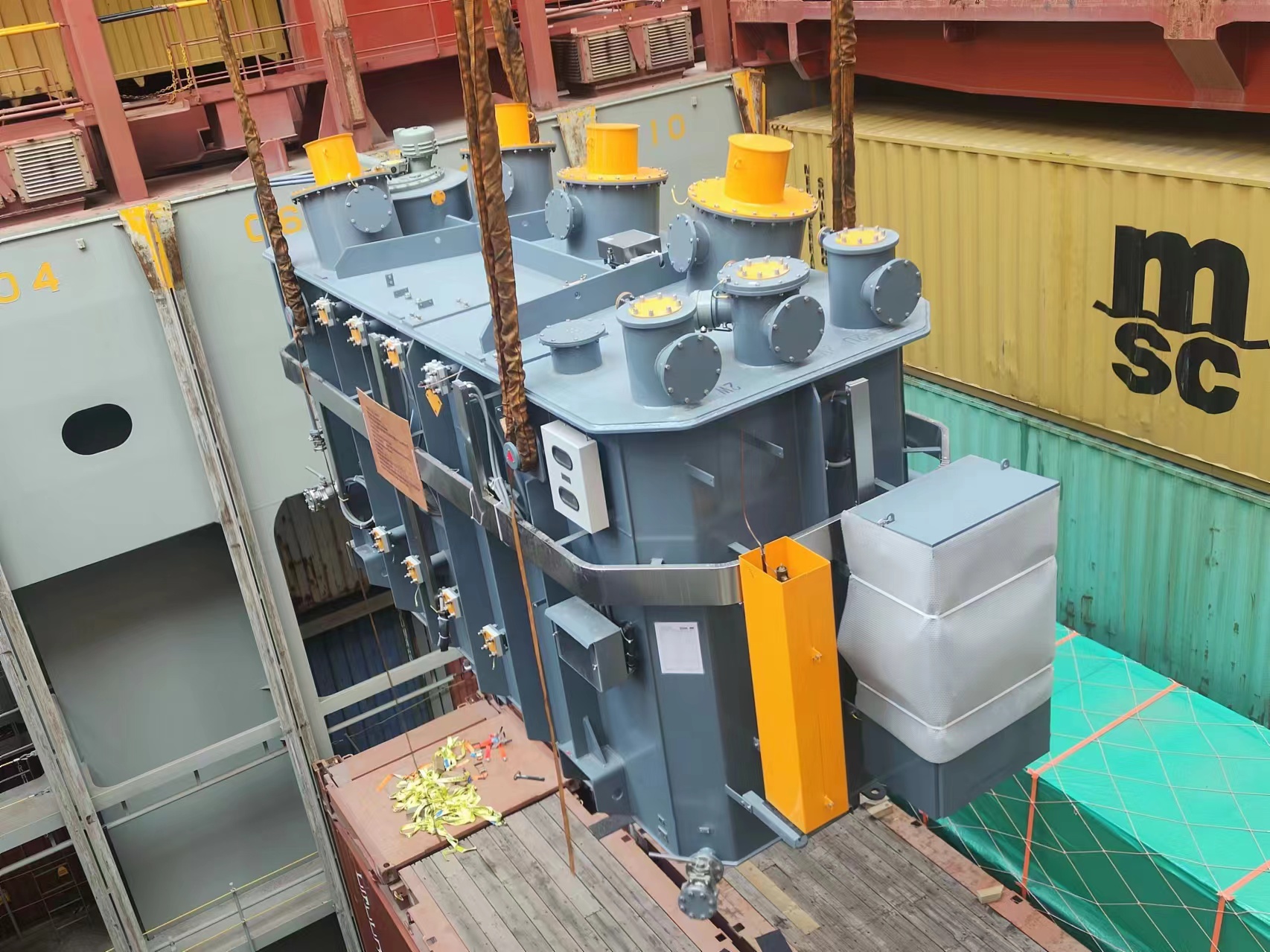
The Port staff hoists the empty containers onto the vessel, and lay the flat rack on the designated space.
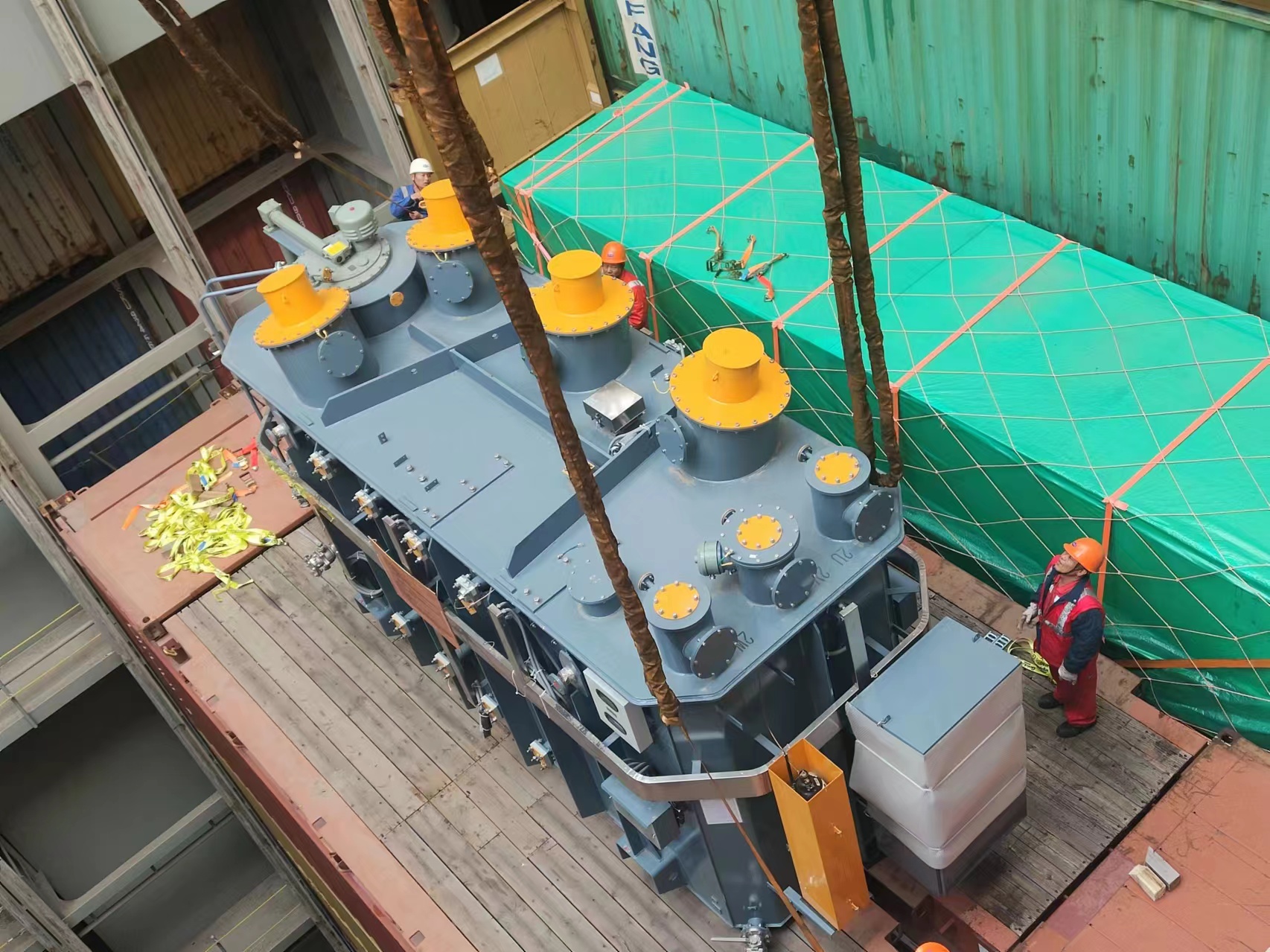
The cargoes will be hoisted onto the vessel and placed on the flat rack containers according to the established plan.

Lash and secure the cargoes after loading on the vessel.

When vessel arrives, the cargoes will be unstrapped and unloaded on the vehicle beside the ship.
BB Container is liner transport with stable shipping schedule. Compared with Breakbulk/RORO service, BB Container covers more ports, the delivery time is more controllable, and the probability of cargo damage is smaller.
The container fleet make the schedule in advance, and wait for the central control notification at the terminal before entering the port. The cargoes and flat rack containers will be delivered to the seaside respectively and wait for loading alongside the ship.
HOOK TO HOOK, the carrier shall be responsible for the cargoes during the period from the loading to the discharging, specifically, the period from the hook of the crane to the hook at the time of discharge.
For BB Container, HOOK TO HOOK, which means the shipowner is responsible for lifting, lashing and unstrapping and unloading alongside the ship at the port of destination, excluding the costs of towing and stacking at the terminal.
The quantity should be declared under one container, and the gross weight and volume should be equally distributed to each container. Some shipowners require all containers declared, while others need parts or one of the containers declared.

